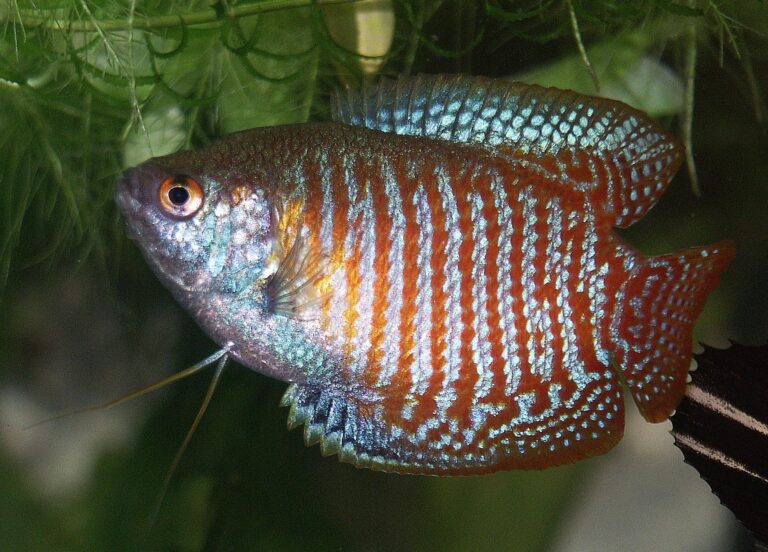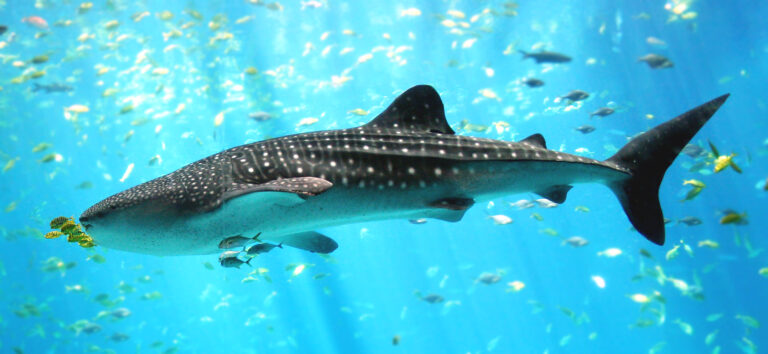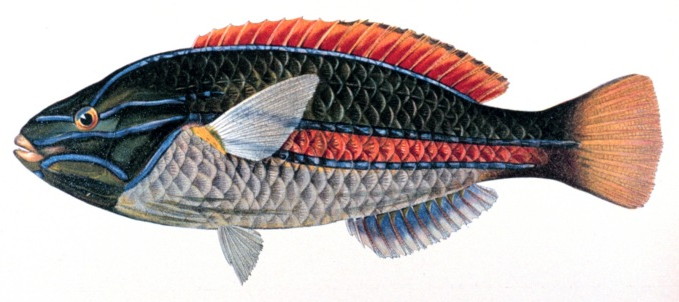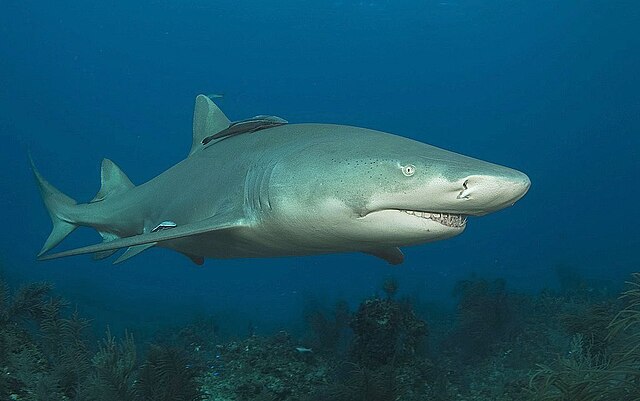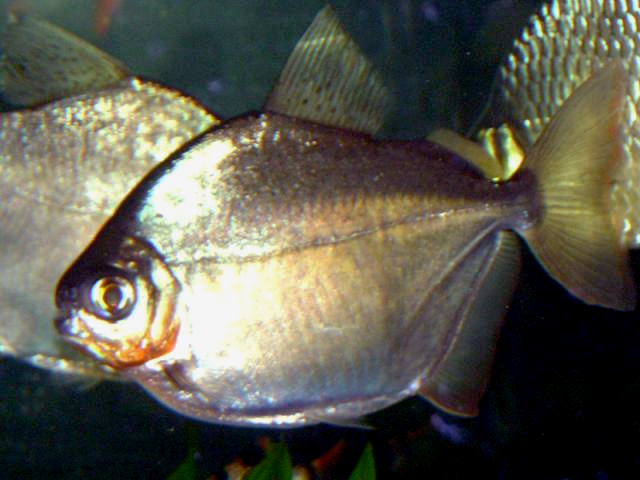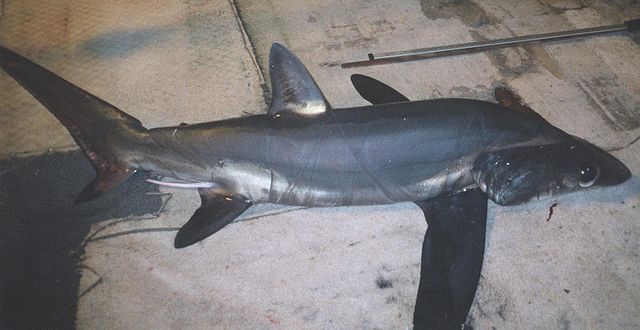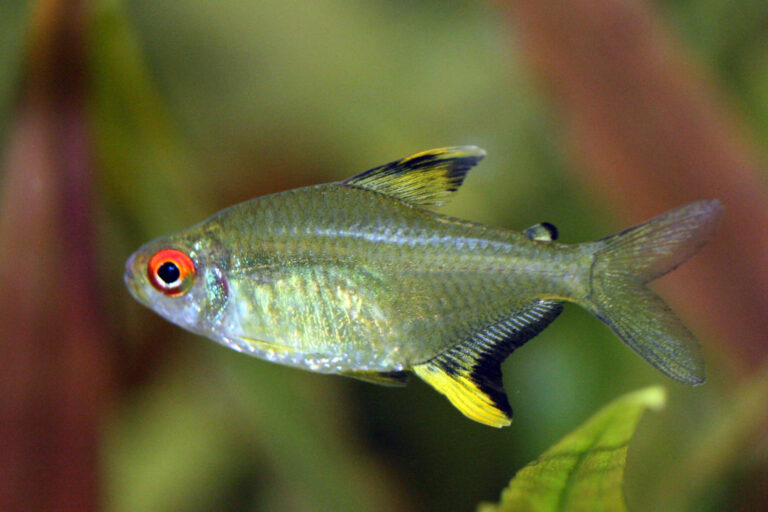Yellowfin VS Bluefin Tuna: Which Should You Target? (Expert Guide)
By Adam Hawthorne | Last Modified: June 4, 2025
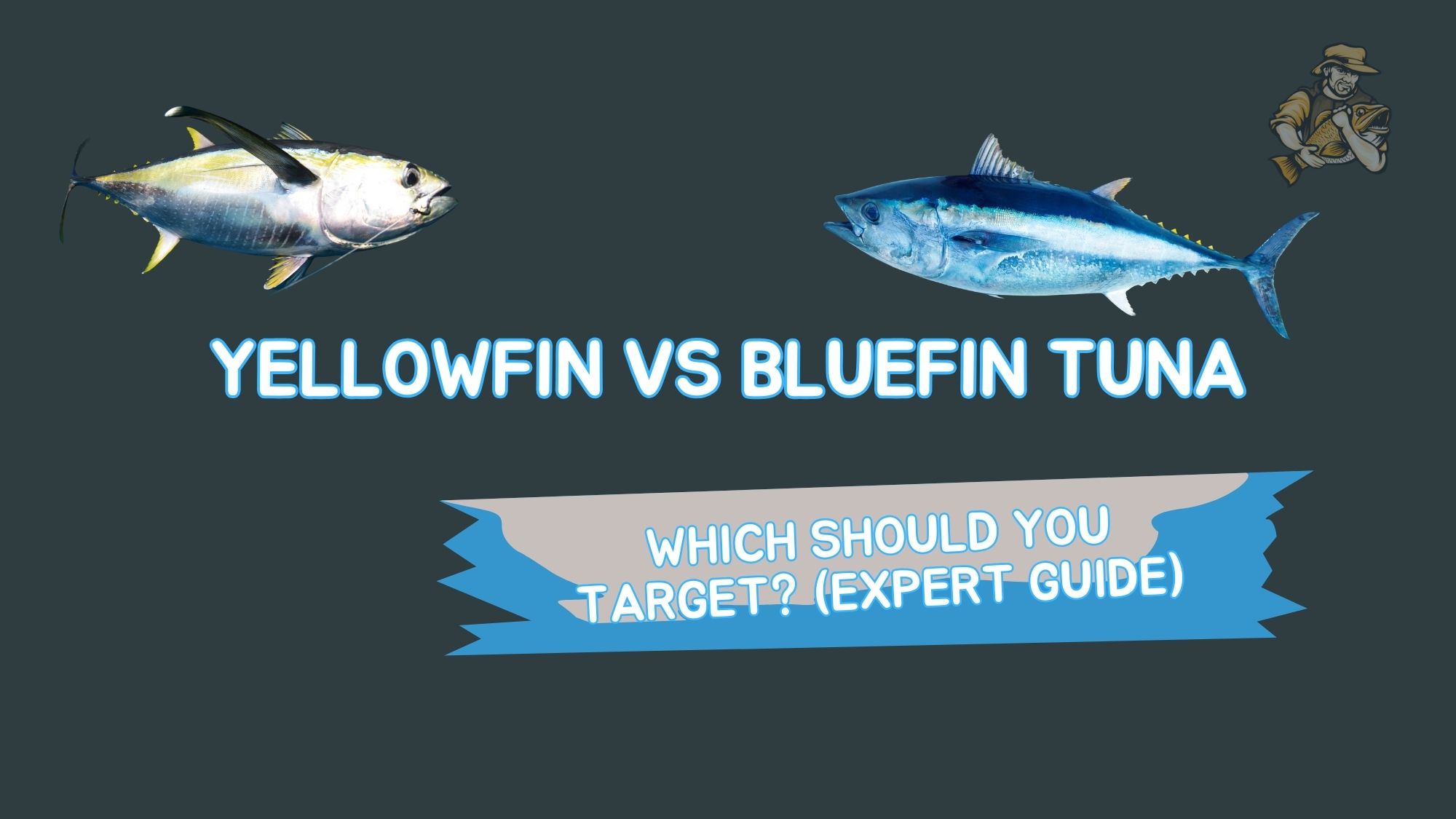
Let’s be honest – the first time I saw a yellowfin and bluefin tuna side by side at the dock, I couldn’t tell them apart. I just stood there nodding like I knew what everyone was talking about while secretly being completely lost. Fast forward thirty years, and after countless offshore trips (and plenty of embarrassing mistakes), I’ve learned there’s a world of difference between these two incredible gamefish.
If you’re trying to decide which of these tuna titans deserves your attention on your next fishing adventure, this guide will break down everything you need to know. I’ll share lessons learned from my own successes and failures, plus insights from some seasoned captains who’ve forgotten more about tuna than most of us will ever know.
Key Differences Between Yellowfin and Bluefin Tuna
When you’re miles offshore and see a school of tuna breaking the surface, telling yellowfin from bluefin could mean the difference between targeting a relatively common catch versus pursuing one of the most valuable fish in the ocean. Here’s what separates these oceanic powerhouses.
Physical Appearance – Not Just the Fins
Contrary to what their names suggest, fin color isn’t always the most reliable way to tell these fish apart. During a trip off North Carolina’s Outer Banks last summer, my buddy Dave (who’s been chartering there for 15 years) pointed out that yellowfin don’t always have bright yellow fins, especially when they’re pulled from the water.
Yellowfin tuna typically have:
- Streamlined, torpedo-shaped bodies
- Bright yellow finlets (small fins) along their backs and bellies
- Yellow-tinged main fins that can sometimes appear quite dark
- Distinct pattern of vertical stripes that may appear and fade
Bluefin tuna are characterized by:
- Stouter, thicker bodies overall (they’re built like linebackers)
- Shorter pectoral fins that don’t reach beyond the front of their second dorsal fin
- Dark blue or black coloration on top with silvery bellies
- Shorter tail fin with less pronounced fork than yellowfin
I learned this difference the hard way after proudly announcing I’d caught a “yellowfin” during a trip off Cape Cod, only to have the entire boat erupt in laughter. The short pectoral fins on my catch were the dead giveaway that I’d actually landed a juvenile bluefin. Still haven’t lived that one down.
Size and Weight – The Trophy Factor
If you’re hunting a true monster, the size difference becomes significant.
Yellowfin typically:
- Average 30-100 pounds in most fishing grounds
- Can reach 200+ pounds in some regions
- Rarely exceed 400 pounds even at maximum size
Bluefin, on the other hand:
- Regularly exceed 500 pounds when mature
- Can grow to truly massive 1,000+ pound giants
- Hold the record for largest tuna species (Atlantic bluefin)
I’ll never forget watching a 600+ pound bluefin get hoisted at Gloucester Marina after a 4-hour battle. The thing looked like it belonged in Jurassic Park rather than the ocean. Nothing prepares you for seeing a fish that size up close – pictures just don’t do it justice.
Habitat and Range – Where to Find Them
Your location plays a huge role in determining which species you’re likely to encounter.
Yellowfin prefer:
- Tropical and temperate waters worldwide
- Surface temperatures between 68-88°F
- Often found near floating structure, dolphin pods, or current breaks
- Commonly targeted in Gulf of Mexico, Hawaii, Southern California, and throughout the Pacific
Bluefin gravitate toward:
- Cooler waters from temperate to almost cold
- Can handle temperatures from 50-80°F (broader range)
- Highly migratory, traveling thousands of miles
- Prime areas include New England, Outer Banks (seasonal), Mediterranean, and southern Japan
On a trip to Venice, Louisiana a few years back, we were catching yellowfin consistently in the deep blue Gulf waters, but when I fished up near Prince Edward Island in September, it was exclusively bluefin territory. The water temperature difference was dramatic – from the bath-warm Gulf to the chilly North Atlantic.
Fishing Techniques – Drastically Different Approaches
This is where targeting these species diverges significantly. During a guided trip off San Diego, our captain switched tactics completely when we realized we were seeing bluefin instead of the expected yellowfin.
For Yellowfin Tuna
Yellowfin can be caught using various methods, but they tend to be more active feeders near the surface than their bluefin cousins.
Effective yellowfin techniques include:
- Run and Gun to Birds The best yellowfin day of my life started when Finn (my black lab) started barking frantically from the back of my boat. Following his gaze, I spotted a massive flock of birds working a bait school about a half mile away. We raced over and found yellowfin demolishing a school of flying fish. Surface activity like this is much more common with yellowfin than bluefin in my experience.
- Chunk Fishing Chunking with butterfish, sardines, or skipjack can be deadly effective. A group of guides I met in the Florida Keys shared their yellowfin chunking approach that emphasizes using a very light fluorocarbon leader and small chunks to avoid spooking fish. This has made a huge difference in my hook-up ratio.
- Kite Fishing In places like South Florida, kite fishing lets you present baits right on the surface where yellowfin can spot them. I wasted two seasons trying to figure out kite fishing on my own before finally swallowing my pride and hiring a guide to teach me properly.
- Trolling with Skirted Baits Medium-sized skirted lures at 7-9 knots has been my go-to approach when searching for yellowfin. The classic spread with blue/white, green/yellow and black/purple skirted ballyhoo rarely fails if the fish are in the area.
For Bluefin Tuna
Bluefin fishing often requires more specialized tactics and heavier gear. They’re typically more finicky and less likely to hit standard offerings, especially in heavily pressured areas.
Successful bluefin approaches include:
- Live Bait Fishing Nothing beats a lively mackerel, herring, or menhaden for trophy bluefin. During a trip to Cape Cod, we spent more time catching bait than actually fishing for tuna, which seemed ridiculous until we hooked our first 300-pound bluefin on a fresh mackerel. Worth every minute of the bait hunt.
- Specialized Jigs Heavy jigs designed specifically for bluefin can be magical in the right conditions. Last year off Montauk, I watched in amazement as a local captain demonstrated his specialized bluefin jigging technique that triggered strikes when nothing else would. He worked the jig in a way I would never have thought to try – almost painfully slow on the drop, then aggressive on the retrieve.
- Kite Fishing and Slow-Trolling Live Baits For monster bluefin, slow-trolling a bridled live bait remains one of the most effective methods. Just be ready for a serious battle when a 600+ pounder decides your offering looks tasty.
- Night Chunking One of the most effective but under-utilized bluefin techniques is chunking at night. During a trip near Stellwagen Bank, we were the only boat chunking past midnight and ended up with three bluefin while the daytime fleet had struggled. Sometimes zigging when others zag makes all the difference.
Regulations and Conservation – Critical Differences
This is where things get complicated and why you absolutely must know which species you’re targeting.
Bluefin Tuna Regulations
Bluefin are heavily regulated due to past overfishing and their slow growth rate:
- Strict permit requirements in most locations
- Individual vessel and size limits that change frequently
- Some bluefin fisheries are catch-and-release only
- Commercial value can exceed $10,000 for a single fish in some markets
Last season, regulations in my area changed three times, and I nearly got caught with an undersized bluefin because I hadn’t checked the updates. A last-minute measurement saved me from what would have been a hefty fine. The rules for bluefin change so often that I now have a reminder in my phone to check regulations the day before any offshore trip.
Yellowfin Regulations
Generally, yellowfin face:
- More generous bag limits than bluefin
- Fewer permit requirements for recreational anglers
- Less stringent size restrictions in most regions
The difference in regulatory complexity is significant. While I’m not saying you should ignore yellowfin regulations (you absolutely shouldn’t), they tend to be more stable and less restrictive than the constantly changing bluefin rules.
I once fished with a group from Michigan who had no idea about the HMS permit requirements for offshore tuna. They were shocked when our captain explained they could face serious fines without proper licensing. Always research requirements before your trip.
Taste and Table Quality – Is One Better?
Both species make exceptional table fare, but there are noticeable differences.
Yellowfin (often marketed as “ahi”):
- Leaner meat with milder flavor
- Light red to pink flesh
- Excellent for sashimi, poke, and lightly seared preparations
- Generally more consistent quality across different sized fish
Bluefin:
- Much higher fat content, especially in the belly (toro)
- Deep red, almost burgundy-colored flesh
- Rich, intense flavor prized in high-end sushi restaurants
- Larger specimens often have more prized fat marbling
I used to automatically reach for yellowfin for home cooking until a chef friend showed me how to properly prepare bluefin. Now I appreciate both for different reasons – yellowfin for everyday meals, and bluefin as a special treat when it’s available. Though if we’re being honest, I still slightly prefer a proper yellowfin steak marinated in soy, ginger and sesame oil. Something about the cleaner flavor just hits right for me.
Equipment Needs – Drastically Different
Your gear requirements vary significantly depending on which species you’re targeting.
For Yellowfin
- 30-50 pound class setups are typically sufficient
- Medium to heavy conventional or spinning outfits
- Line capacity of 300-400 yards minimum
- Leaders in the 60-80 pound range
My workhorse yellowfin setup is a Penn International 30VSX paired with a medium-heavy rod. Nothing fancy, just reliable equipment that’s handled everything from 30-pound schoolies to a memorable 180-pounder off the Mexican coast. I’ve also had good success with high-capacity spinning reels when using popping plugs for surface-feeding yellowfin.
For Bluefin
- 50-130 pound class tackle often necessary
- Heavy conventional reels with serious drag systems
- Line capacity of 500+ yards critical
- Leaders from 80-200 pound test depending on fish size
- Specialized harnesses and fighting belts for larger specimens
I learned about proper bluefin gear the hard way when a monster spooled my “heavy” yellowfin setup in about 45 seconds flat. I’d spent good money on that outfit and thought it was unbeatable until meeting a real bluefin. Since then, I’ve invested in dedicated bluefin gear that’s frankly overkill for most other fishing, but essential when targeting these giants.
Making Your Decision – Which Should You Target?
After all these differences, which should you actually pursue? Here’s my take based on different angler priorities:
Choose Yellowfin If:
- You’re newer to offshore fishing
- You want more consistent action
- You prefer lighter tackle
- You’re fishing tropical or warm-temperate waters
- You enjoy more active, visual fishing (birds working, surface splashes)
- You’re looking for excellent table fare without the trophy factor
- You prefer simpler regulations and fewer permit requirements
Choose Bluefin If:
- You’re seeking a potential fish of a lifetime
- You enjoy the challenge of more technical fishing
- You have experience with heavy tackle and long battles
- You’re fishing in cooler, temperate waters
- You’re properly prepared with heavy duty equipment
- You’ve thoroughly researched current regulations
- You’re willing to spend more time searching for fewer, larger fish
My Personal Take (A Bit Controversial)
After chasing both species for three decades, I have a somewhat unpopular opinion: yellowfin provide better overall experiences for most anglers, while bluefin create better stories but often more frustrating trips.
I’ve guided folks who drove all night, spent hundreds on fuel, and returned home without ever seeing a bluefin – that’s just the nature of the pursuit. Meanwhile, in good yellowfin territory like the Gulf, catching multiple fish in a day is often the norm rather than the exception.
But there’s nothing – and I mean absolutely nothing – that compares to the heart-stopping power of a giant bluefin when it realizes it’s hooked. It’s like trying to stop a Mack truck with fishing line.
Last October, I spent three consecutive dawn trips off Cape Cod without a single bluefin hookup. The fourth morning, in sloppy 4-5 foot seas, we finally connected with a fish that took nearly 3 hours to land. That memory burns brighter than dozens of successful yellowfin trips combined, which probably explains why I keep going back despite the lower success rate.
Final Thoughts on Choosing Between Yellowfin and Bluefin
For most recreational anglers, especially those newer to offshore fishing, yellowfin offers the better overall experience. They’re more abundant, slightly less gear-intensive, and provide exceptional action when found. They’re also subject to less complicated regulations in most areas.
Bluefin represent the pinnacle of tuna fishing but demand more – more experience, more specialized equipment, more patience, and often more money spent on fuel searching for them. They’re not a species I’d recommend for someone’s first offshore experience.
If you’re still torn between the two, consider this: my first dedicated tuna trip targeted yellowfin, and I’m eternally grateful for that. Starting with the slightly more forgiving species built my confidence and skills before moving up to the challenge of bluefin. There’s no rule saying you can’t pursue both throughout your fishing career – that’s certainly what I’ve done.
Whatever you decide, respect these magnificent fish. Handle them properly, know the regulations inside and out, and remember that the privilege of catching them comes with the responsibility of ensuring they’re around for future generations.
Frequently Asked Questions About Yellowfin vs. Bluefin Tuna
Can you catch yellowfin and bluefin in the same areas?
In some regions like Southern California and the Outer Banks of North Carolina, you can encounter both species, though rarely at exactly the same time or location. Water temperature boundaries typically separate them, with yellowfin preferring the warmer side. During a trip off San Diego last year, we found schools of yellowfin in 74°F water, while bluefin were holding just five miles away in a cold upwelling where temperatures dropped to 64°F. Always check recent fishing reports to see which species is more active in your target area.
Which tuna species puts up a better fight?
Pound-for-pound, they’re both incredible fighters, but they fight differently. Yellowfin typically make blistering initial runs followed by dogged circling. Bluefin often sound straight down and can maintain their power for hours. I’ve had 100-pound yellowfin that fought harder than 200-pound bluefin, and vice versa. The individual fish matters more than the species in many cases. That said, nothing in the ocean matches the sustained power of a giant bluefin over 500 pounds.
What’s the best season to target each species?
This varies dramatically by region. In the Gulf of Mexico, yellowfin can be caught year-round, with peak seasons in spring and fall. Bluefin in New England waters are typically most accessible from June through October. The best resource is always local charter reports from your specific region as seasonal patterns can shift from year to year. I keep a fishing log with water temperatures and success rates that’s proven more valuable than any published calendar.
Which tuna is more expensive to fish for?
Bluefin fishing generally requires a larger investment in both tackle and fuel. The boats typically run farther, burn more fuel searching, and the necessary equipment is significantly more expensive. On my last bluefin-specific trip, we burned nearly twice the fuel we would on a typical yellowfin outing, largely because we covered so much more water looking for fish. Additionally, the permit requirements for bluefin can add costs that don’t apply to yellowfin trips in many areas.
Can beginners target either species successfully?
Beginners can absolutely catch yellowfin with proper guidance and reasonable expectations. For bluefin, I strongly recommend fishing with experienced captains or anglers before attempting to target them independently. My first few bluefin experiences were frustrating failures until I spent time learning from captains who specialized in catching them. The learning curve for bluefin is simply steeper, and the stakes higher when you do hook up.

Meet Adam Hawthorne
I’m a lifelong fishing enthusiast who’s spent years exploring rivers, lakes, and oceans with a rod in hand. At Fishing Titan, I share hands-on tips, honest gear reviews, and everything I’ve learned about fish and ocean life, so you can fish smarter and enjoy every cast.
Share:

Meet Adam Hawthorne
I’m a lifelong fishing enthusiast who’s spent years exploring rivers, lakes, and oceans with a rod in hand. At Fishing Titan, I share hands-on tips, honest gear reviews, and everything I’ve learned about fish and ocean life, so you can fish smarter and enjoy every cast.
Related Articles
-
Gouramis
Gouramis represent one of the most fascinating and diverse groups of freshwater fish, belonging to the family Osphronemidae within the suborder Anabantoidei. These remarkable fish…
-
Whale Shark
The whale shark (*Rhincodon typus*) stands as the ocean’s largest fish species, representing one of nature’s most remarkable gentle giants. Despite its imposing size, reaching…
-
Rainbowfish
Rainbowfish represent one of the most visually striking and ecologically significant groups of freshwater fish found across Australia, New Guinea, and Indonesia. These vibrant schooling…
-
Comet Goldfish
The Comet Goldfish (Carassius auratus) stands as one of the most recognizable and widely distributed freshwater fish species in the world. This hardy ornamental fish…
Fish Species
-
Lemon Shark
The Lemon Shark (*Negaprion brevirostris*) represents one of the most scientifically studied and ecologically significant predators in coastal marine environments. This distinctive requiem shark, easily…
-
Silver Dollar Fish
The Silver Dollar Fish (*Metynnis argenteus*) stands as one of South America’s most recognizable freshwater species, renowned for its distinctive disc-shaped body and shimmering silver…
-
Bigeye Thresher Shark
The Bigeye Thresher Shark represents one of the ocean’s most extraordinary predators, distinguished by its dramatically elongated tail fin that can extend up to half…
-
Lemon Tetra
The Lemon Tetra (*Hyphessobrycon pulchripinnis*) stands as one of South America’s most vibrant freshwater fish species, distinguished by its brilliant yellow coloration and peaceful schooling…

